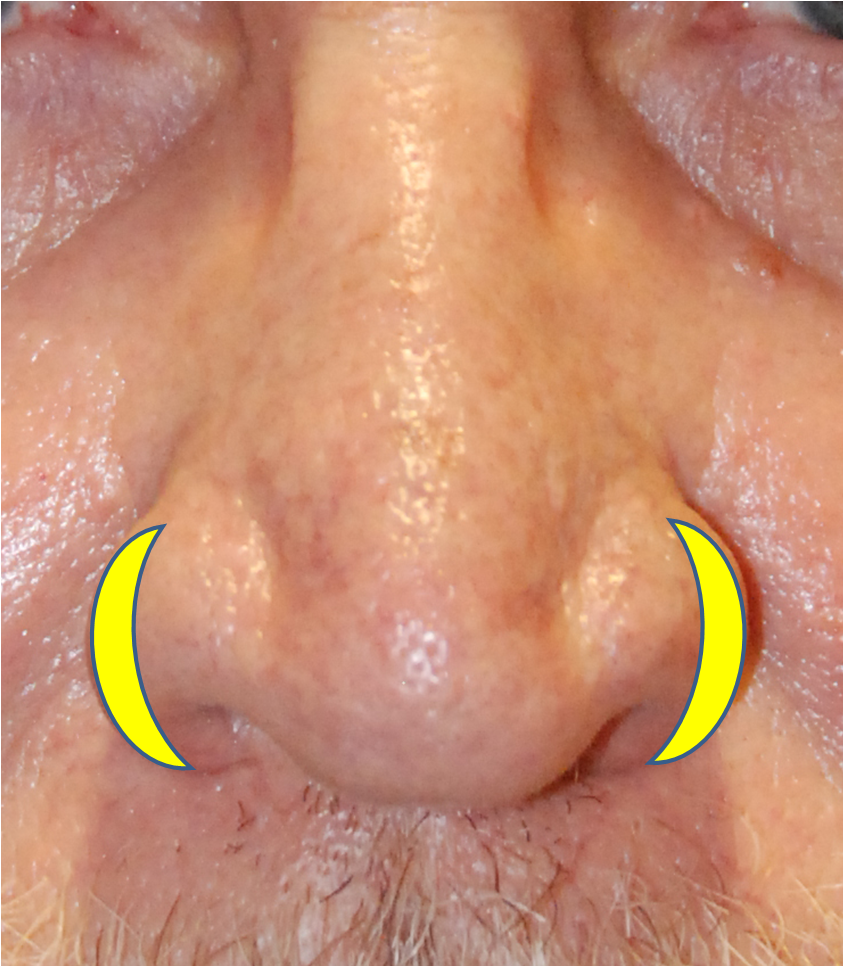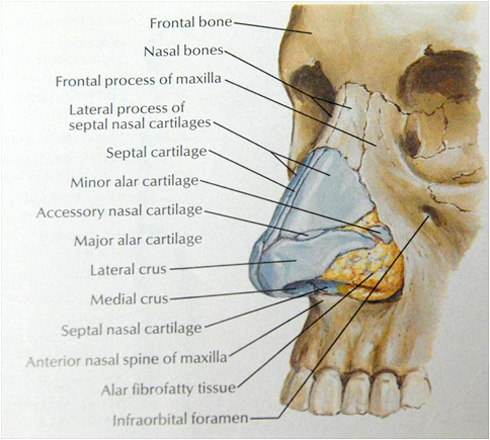This is a patient that did not like the size of his nose and wanted it to be less wide and also wanted his tip to be less droopy and more elevated and smaller if possible. This solution that I discovered avoids large incisions on the bridge of the nose or above and can lead to incisions that hide well inside the nose. The below picture shows how we planned the alar resection next to the nostrils to make the nostrils smaller and the nose less wide (1st figure). Now this was done with an open approach where we made an incision in the columnella. This is the structure that is made from the medial crus (take a look at our anatomy picture for a better visual on where the incision is made). The columnellar incision is made on the inferior side between the nostrils and hides very well. I have a picture of this on my website on the rhinoplasty procedure page (Dr Young of Bellevue near Seattle Washington). There used to be a lot of fear of devascularizing the nasal tip by doing the rhinoplasty open and then also resecting the alae (see alar fibrofatty tissue on the nasal anatomy picture below 2nd figure). We did this persons procedure below and was able to get an excellent result without causing any nasal tip skin loss. More importantly, we had to figure out how to change the thick nasal skin on this persons nose. I developed a way of taking away skin without making any incisions on the top of the nose where it is more visible. The 3rd picture shows how we made the nose skin smaller by taking away skin from the bottom and within the nose. I first made an incision down the middle of the lobule part of the nose just under the nasal tip and then made the corresponding angle part of the incision of the transcolumnellar scar that is like an inverted gull wing incision. This was further taken to the soft triangle area where the wings of the incisions are shown in the third picture. The blue shaded area is where the skin was taken. When the incisions were closed they rested inside the nose so the scarring was all inside the nose hidden. I judged how much skin to take by tensing the skin over the tip and determining how much tension was on the closure at the transcolumnellar site.
Thanks for reading, Dr Young
Dr Young specializes in Facial Plastic and Reconstructive Surgery and is located in Bellevue near Seattle, Washington Rhinoplasty
Rhinoplasty





